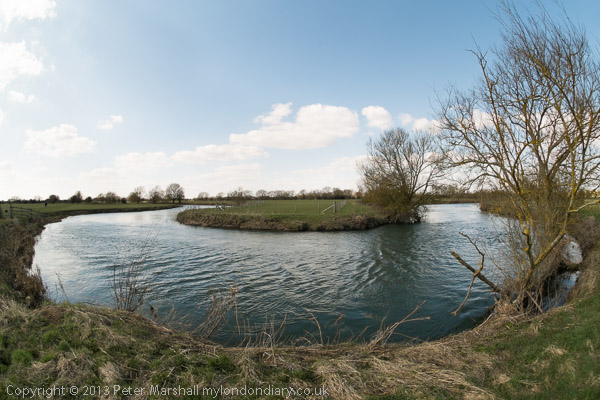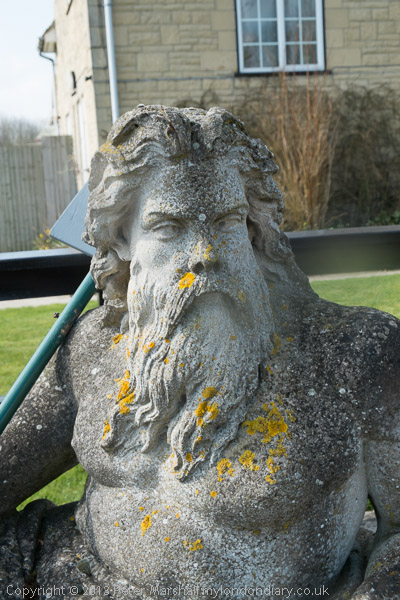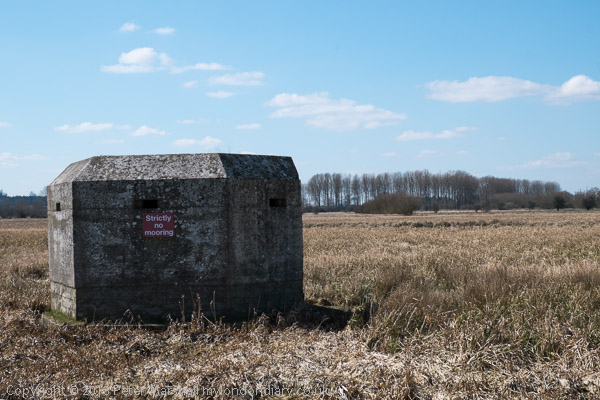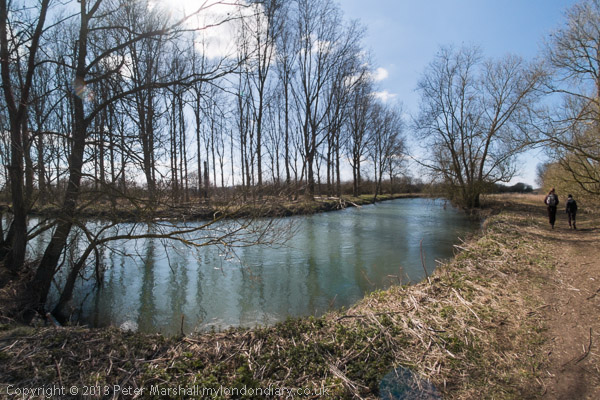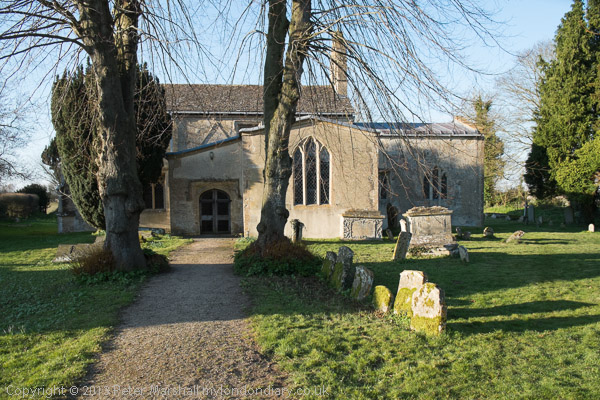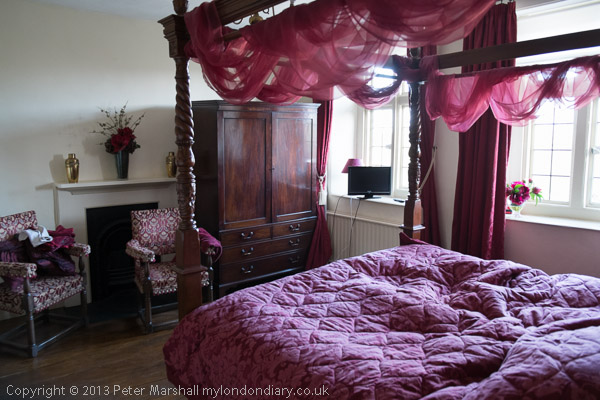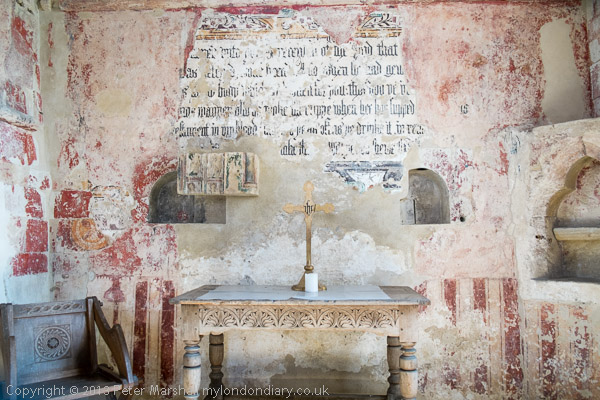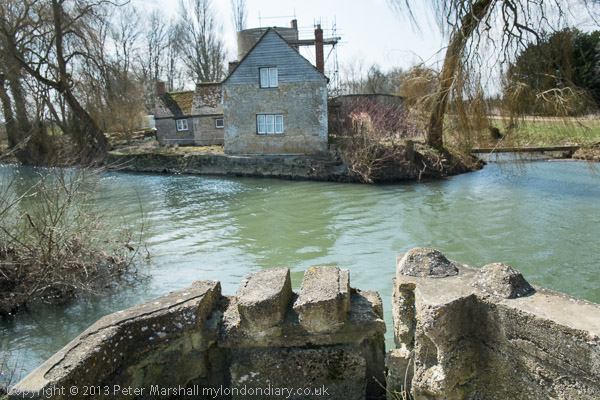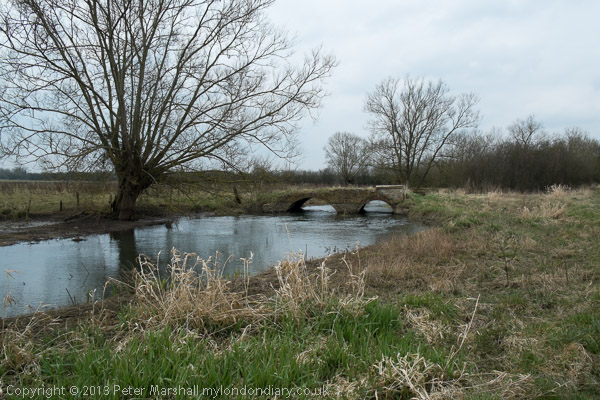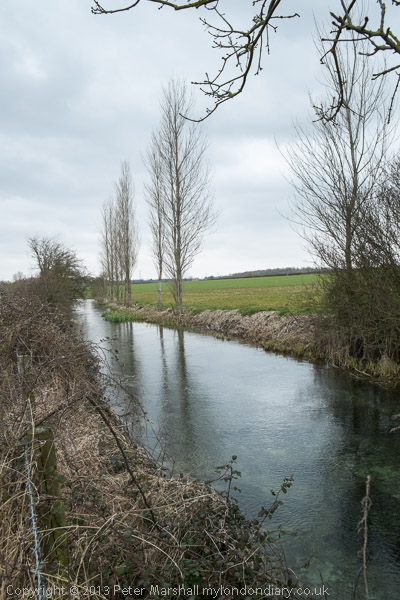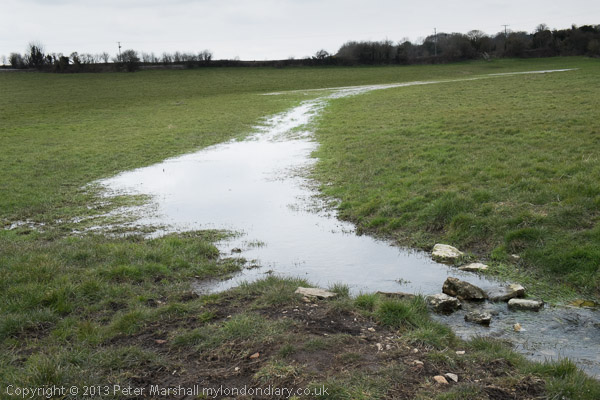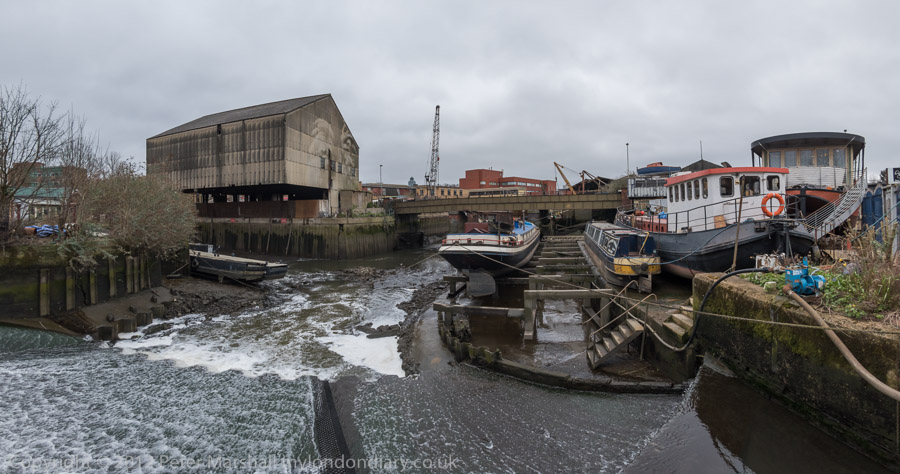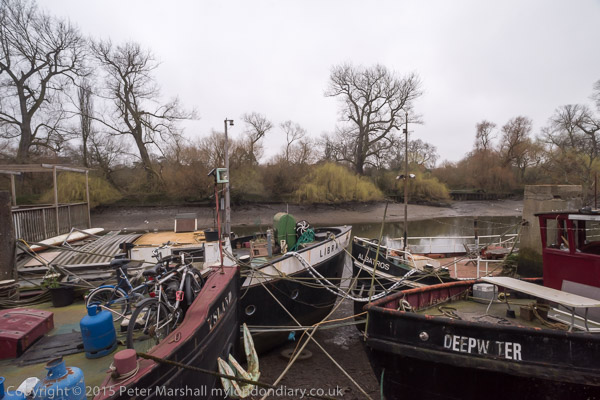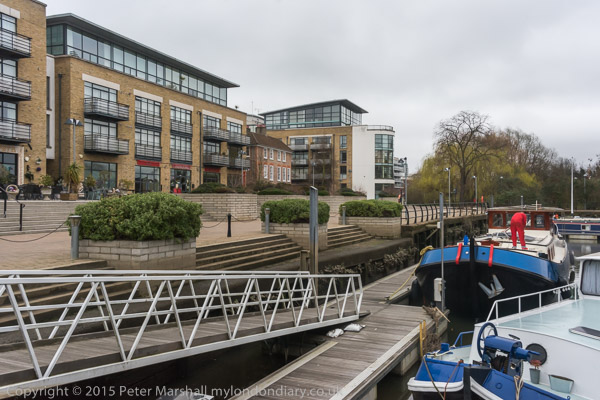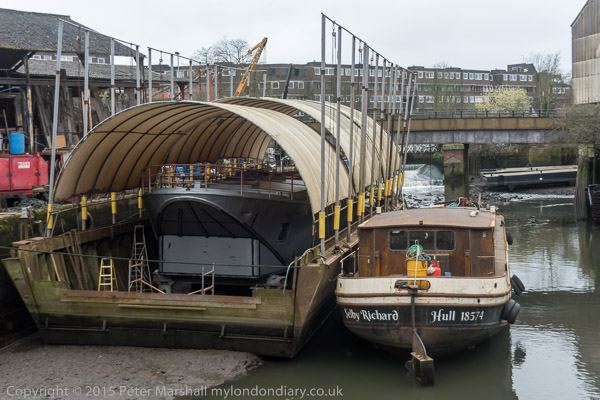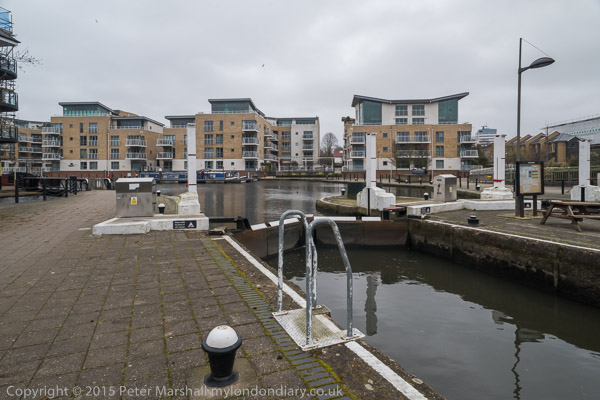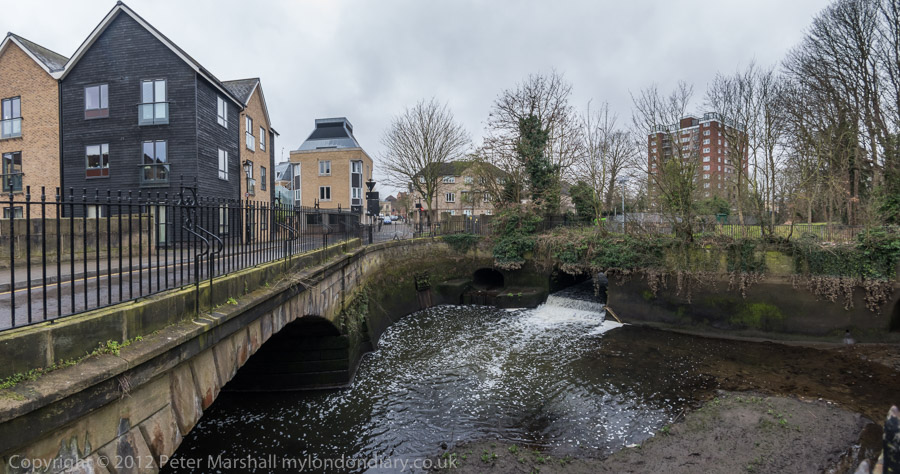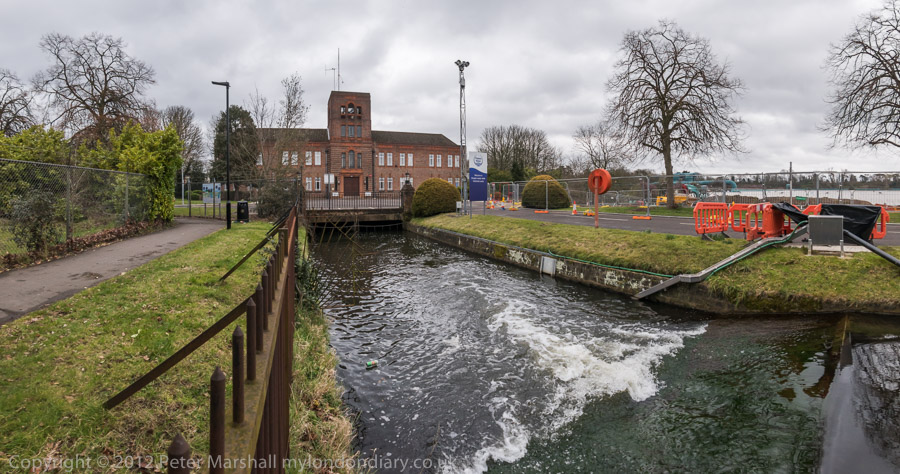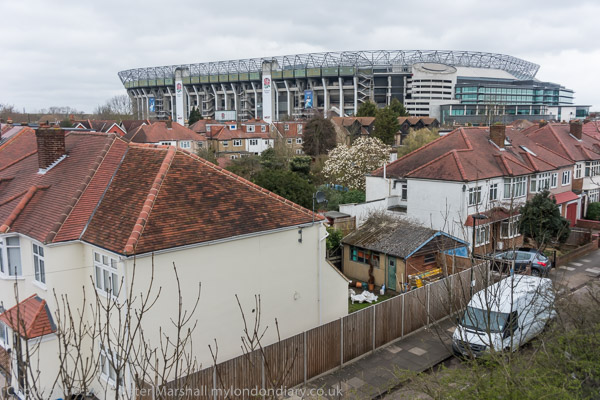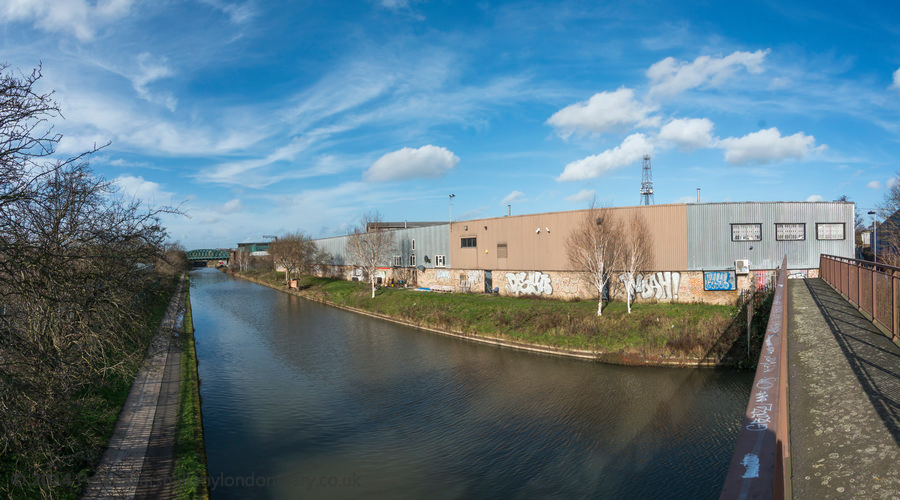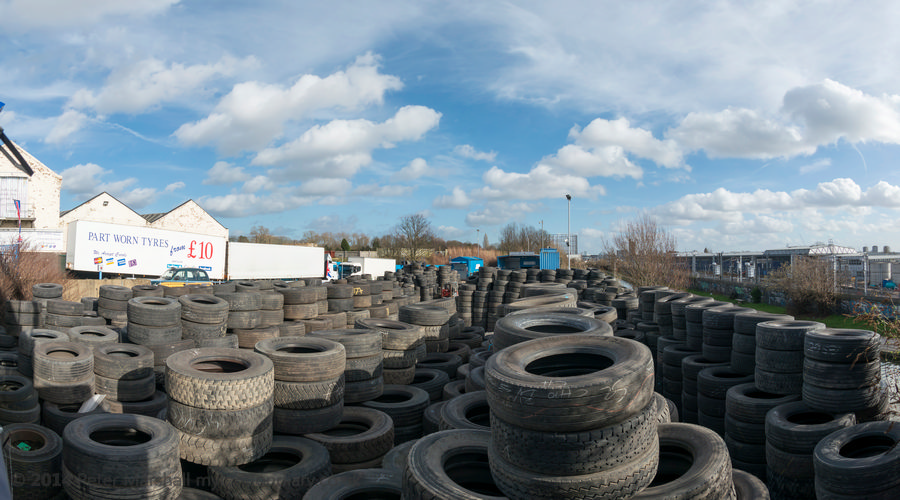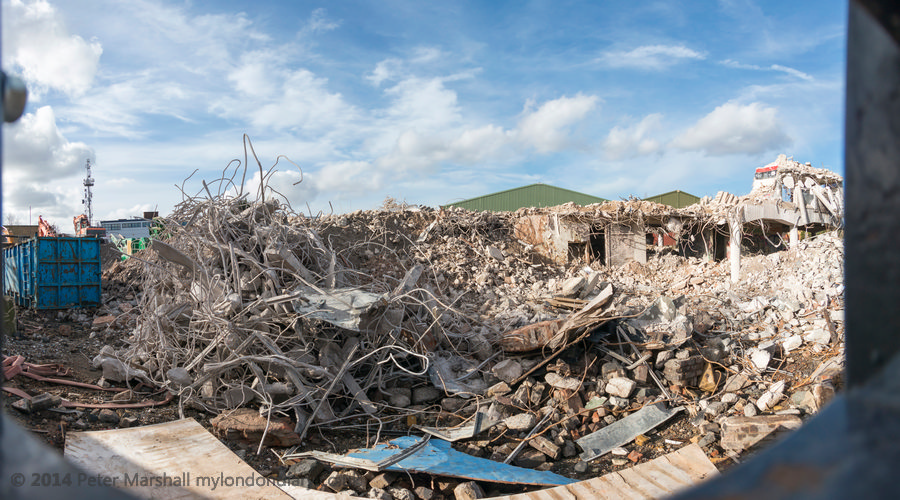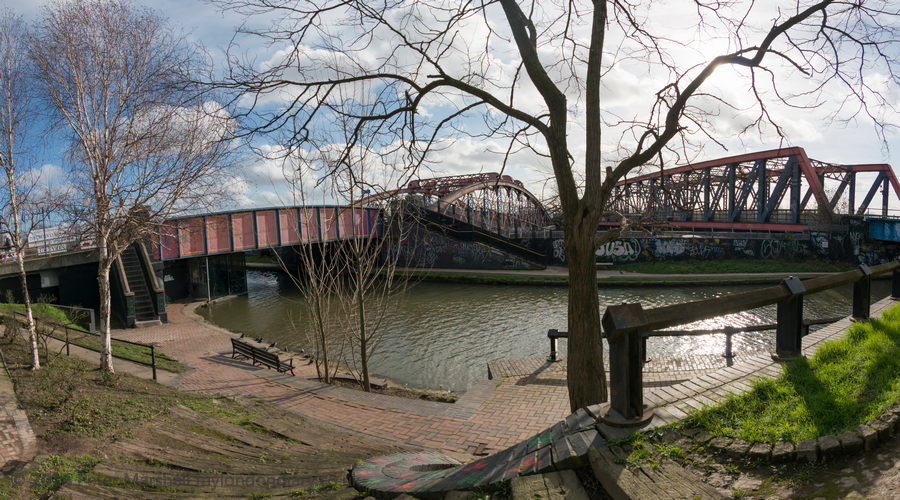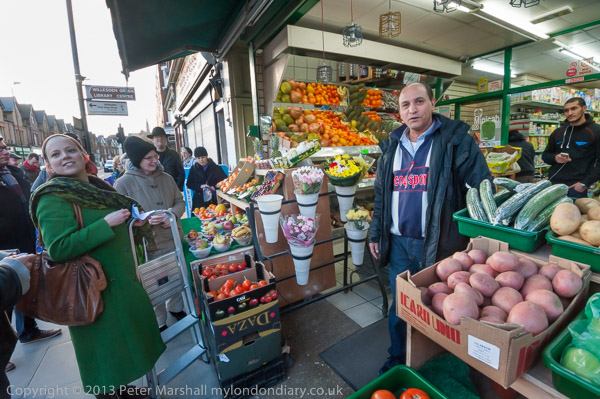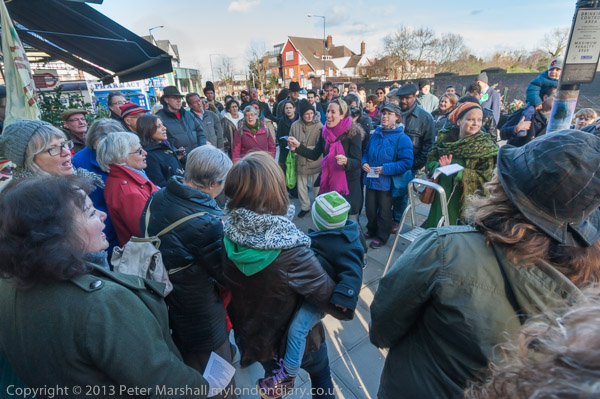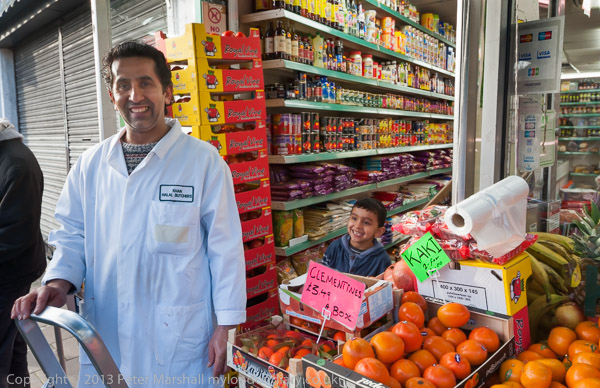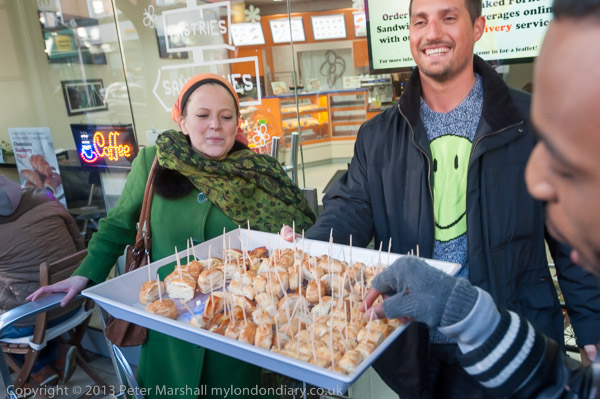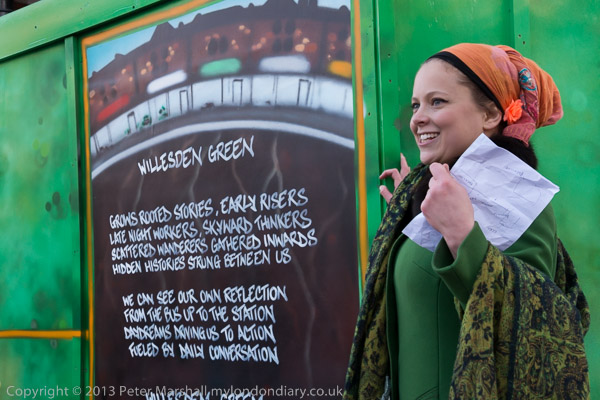After my stay in Paris in August 1988 I was back in London and managed to fit in one more walk before the end of the month, starting from where I had finished one of my previous walks in Bethnal Green.
Old Ford Road runs parallel to Roman Road but a couple of hundred yards to the north, and almost certainly follows the real Roman route to the east out of London, fording the River Lea somewhere close to where the Northern Outfall Sewer (The Greenway) now crosses. The river here is a part of the Lea Navigation and now very much more constrained between banks than it once was, though then it will still have been tidal here.
There was a route here even before the Romans, leading along the way of modern Oxford St and Old Street to Bethnal Green and Old Ford and then continuing through what were then marshes to Wanstead Slip north of Stratford and on the Colchester.
There are long stretches of Victorian houses as well as modern flats along Old Ford Road, but the house at the left of this picture is No 218, and is a terrace beginning with 196 and ending at 224 a little to the west of the bridge over the Regent’s Canal and immediately north of the Cranbrook estate.
I wasn’t sure what to make of this establishment on Roman Road, which seemed to be both a Patisserie and Bar, offering Light Lunches & Coffee, as well as catering for all functions, with rather curious window decoration and an odd bit of statuary in its entrance.
I did a lot more walking without taking many photographs, going south down Usher Road and then going east to cross the East Cross Route on Wick Lane before joining the towpath on the opposite bank of the Lea Navigation to get to the Middlesex Filter Beds at the north corner of the Hackney Marshes – something over 2 miles before I took the next black and white pictures in what had been turned into a nature reserve.
The filter beds were built in the early nineteenth century to combat cholera in London by providing clean drinking water which was still killing thousands but were unable to cope with the increasing population and were finally closed in 1969, left to become a nature reserve. I think they may have recently been made open to the public when I made this short visit. Going back more recently they seem to have been made a little less overgrown than they had become over the 19 years since they were abandoned. This image seems to me the more interesting of the five frames that I took – film was still expensive.
Walking back south along the towpath I made three exposures of this derelict building with its broken windows and the reflection in the canal by the Eastway Bridge. I probably took few pictures on this part of the walk as I had photographed fairly extensively along the Lea a few years earlier – some pictures you can see in the book ‘Before the Olympics‘ which has images from the source to the Thames.
At Hackney Wick I crossed the bridge and took the towpath beside the Herrtford Union Canal, a short section joining the Lea Navigation to the Regent’s Canal. Then there were still a number of canal wharves, mainly for timber, though it was a few years since commercial traffic here had ended.
Another view of the same wharf, and one of the lorries which now served them rather than canal boats. The Challenge, owned by the Docklands Canal Boat Trust, a registered charity formed in 1985 that provides boating holidays and day trips for people with disabilities, is a specially built boat for the purpose – and it was a challenge to get the money to build it. Still in operation it is now based on the Lea at Clapton.
Hertford Union, canal, Hackney Wick, Tower Hamlets, 1988 88-8am-31
There was still plenty of timber along this stretch of the canal.
More from the end of this walk in a later post. You can see a larger version of any of these pictures by clicking on them which will take you to my album 1988 London Photos.






























